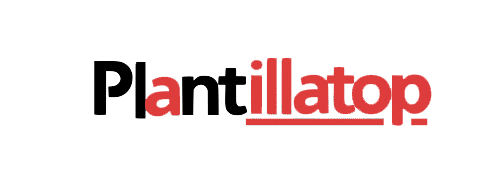In the fast-paced world of software development, navigating the complex galaxy of open-source licenses can feel like piloting a rocket through an asteroid field. You’re building something amazing, aiming for the moon, but hidden legal and compliance risks lurk in the darkness. What if you had a system that projected all this critical information right onto your cockpit window, just like a fighter pilot’s HUD?
Enter the concept of the Doge Software Licenses Audit HUD. This isn’t just a fancy acronym; it’s a powerful mindset and a practical framework for managing your software’s legal health. It’s about having a real-time, transparent, and proactive view of your license obligations, ensuring your project—like the beloved Dogecoin—can soar safely.
Let’s decode what a Doge Software Licenses Audit HUD truly means and why integrating this approach is the difference between a successful moon landing and a catastrophic project failure.
What is a Doge Software Licenses Audit HUD? Breaking Down the Jargon
To understand its power, let’s break down the keyword:
- Doge: Represents the modern, agile, and often complex nature of software today. Inspired by Dogecoin, it signifies projects built on a foundation of collaborative, open-source code. It’s about being community-driven but also professionally managed.
- Software Licenses Audit: This is the core process—a systematic review of all third-party components in your codebase to identify their licenses and ensure compliance.
- HUD (Heads-Up Display): This is the revolutionary part. It transforms the audit from a dreaded, one-time event into a continuous, integrated, and visible monitoring system. A true HUD gives you vital data without obstructing your view, allowing you to make critical decisions in real-time.
A Doge Software Licenses Audit HUD, therefore, is a continuous compliance strategy that provides a live dashboard of your project’s license status, risks, and obligations, ensuring you are always flight-ready.
Why Your Project Desperately Needs This HUD Activated
Flying without a Doge Software Licenses Audit HUD is pure guesswork. The risks are not just theoretical; they are business-ending.
1. Such Legal Woes. Very Court. Wow.
The most immediate threat is litigation. Licenses like the GNU GPL (General Public License) are legally binding. If you incorporate GPL code into your proprietary product without complying with its terms (i.e., open-sourcing your derivative work), the copyright holder can sue you. This can lead to:
- Costly financial damages.
- Injunctions forcing you to stop distributing your product.
- A massive, public legal battle that drains resources and morale.
Your Doge Software Licenses Audit HUD flags GPL and other copyleft components the moment they enter your codebase, giving you a chance to course-correct before launch.
2. Reputational “Much Ouch” in the Community
The open-source community thrives on trust and reciprocity. A violation is seen as a breach of that trust. For a project inspired by the “Doge” ethos of fun and collaboration, being exposed for license non-compliance is a devastating blow. Your HUD protects not just your code, but your brand’s reputation.
3. Investor FUD (Fear, Uncertainty, and Doubt)
When investors perform due diligence, a messy, non-compliant codebase is a major red flag. It can devalue your company or cause a funding round to collapse. A clean report from your Doge Software Licenses Audit HUD is a powerful asset, proving your IP is clean and your operations are professional.
Building Your Own Doge Software Licenses Audit HUD: A Step-by-Step Guide
Implementing a HUD isn’t magic; it’s a process. Here’s how to build yours.
Phase 1: The Initial System Scan (Calibrating the HUD)
Before your HUD can display real-time data, you need a baseline. This is the traditional audit part.
- Action: Use automated Software Composition Analysis (SCA) tools like FOSSA, Snyk, or Black Duck to perform a deep scan of your entire codebase, including all direct and transitive dependencies.
- Output: A comprehensive Software Bill of Materials (SBOM)—a complete manifest of every software component you use.
Phase 2: License Identification & Risk Categorization (Defining the Warning Lights)
Your HUD needs to know what to look for. This is where you define your license policy.
- Green Light (Approved): Permissive licenses like MIT and Apache 2.0. Your HUD shows these as clear. Requirement: usually just attribution.
- Yellow Light (Review Needed): Weak copyleft licenses like LGPL. Your HUD flags these for developer and legal review to ensure correct linking.
- Red Light (High Risk): Strong copyleft licenses like GPL or AGPL. Your HUD flashes a clear warning. These often require you to open-source your own code and must be approved as a strategic decision.
Phase 3: Integration & Continuous Monitoring (Activating the Live HUD)
This is where the “HUD” truly comes to life. You move from a static report to a live system.
- Integrate into CI/CD: Connect your SCA tools to your development pipeline (e.g., GitHub Actions, GitLab CI, Jenkins). Now, every pull request and new build is automatically scanned.
- Create the Dashboard: Use the tool’s reporting features or build a central dashboard that shows:
- Total components and their license distribution.
- New high-risk licenses introduced in the last week.
- Policy violations blocking a build from merging.
- A list of outdated or vulnerable components.
Phase 4: Developer Empowerment (Piloting with the HUD)
A HUD is useless if the pilot ignores it. Make the data accessible to your team.
- Break the Build: Configure your HUD to fail a build if a developer tries to merge code with a forbidden “Red Light” license.
- Inline Comments: Use bots that automatically comment on pull requests, saying, “Hey Shibe! This PR introduces a library with a GPLv3 license. Please consult the compliance policy.”
- Regular Reports: Send weekly “Flight Status” emails to the whole team, summarizing the project’s license health.
The “To the Moon” Benefits of a Live Doge Software Licenses Audit HUD
Beyond avoiding disaster, a proactive HUD delivers strategic advantages:
- Speed and Confidence: Developers code faster because they get immediate feedback, not a nasty surprise months later during an acquisition audit.
- M&A Readiness: Your company becomes a more attractive acquisition target. You can provide a clean, real-time SBOM and compliance report instantly.
- Enhanced Security: Most SCA tools that power your HUD also scan for known vulnerabilities, making your software safer as well as more compliant.
- Cultural Shift: It fosters a culture of responsibility and awareness, aligning your team with the true collaborative spirit of open source.
Conclusion: Don’t Just HODL Code, Manage It Wisely
The journey of Dogecoin from a joke to a serious project teaches a vital lesson: success is built on a foundation of robust, compliant technology. A Doge Software Licenses Audit HUD is not a constraint on innovation; it’s the enabler.
It’s the intelligent system that lets you focus on the stars—building amazing features and growing your community—while it quietly and constantly watches for legal asteroids. By adopting this proactive approach, you ensure that your project’s mission is not just “to the moon,” but to a sustainable and successful future in the software galaxy.
Activate your HUD today. Because a compliant project is a happy project. Wow.

